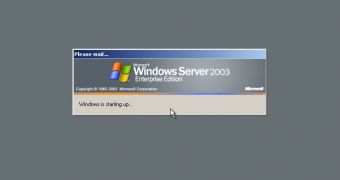After Windows XP, another popular Windows version is getting the ax soon, so users must again prepare for end of support by upgrading to a newer release.
This time, it's Windows Server 2003's turn to fight for life, as Microsoft will officially pull the plug on it on July 14, 2015, which means that users have only 438 days left to upgrade.
While it's pretty clear that moving a Windows Server computer to a newer version of the platform is much more difficult than it was in Windows XP's case, HP warns that no less than 11 million systems are still running the platform, so Microsoft must continue its efforts to raise awareness for the upcoming end of support deadline.
According to The Channel's estimates, this means that nearly 25,000 Windows Server 2003 systems need to upgraded every day in order to make sure that on July 14, 2015 no computer running this particular platform will be available out there in the wild.
“There are 11 million servers in the market today running Windows 2003. Those servers will ultimately modernise and refresh to the next generation platform,” Bill Veghte, exec veep and general manager for HP's Enterprise Group, was quoted as saying by the aforementioned source.
Just like it happened in Windows XP's case, companies and organizations running Windows Server 2003 need to come up with a plan to move all data to a newer platform and analysts warn that a migration path is absolutely necessary for those who want to remain secure and meet the deadline.
“A surprising number of client organisations will be operating those unsupported systems next year and beyond; they range from medium-scale up to the largest enterprise IT organisations. Both technically adept and less sophisticated shops will find themselves without sufficient time and budget to completely migrate all workloads,” Gartner analyst Carl Claunch explained, according to The Channel.
Microsoft tried really hard to convince Windows XP users to move to a newer operating system but even now after approximately one month since the company pulled the plug on this OS version, no less than 26 percent of the desktops worldwide are still running it.
Of course, in Windows Server 2003's case, numbers are a lot lower and fewer computers are actually running it, but there's no doubt that many companies might actually miss the deadline due to the high costs of the entire process, as hardware upgrades are also necessary.

 14 DAY TRIAL //
14 DAY TRIAL //